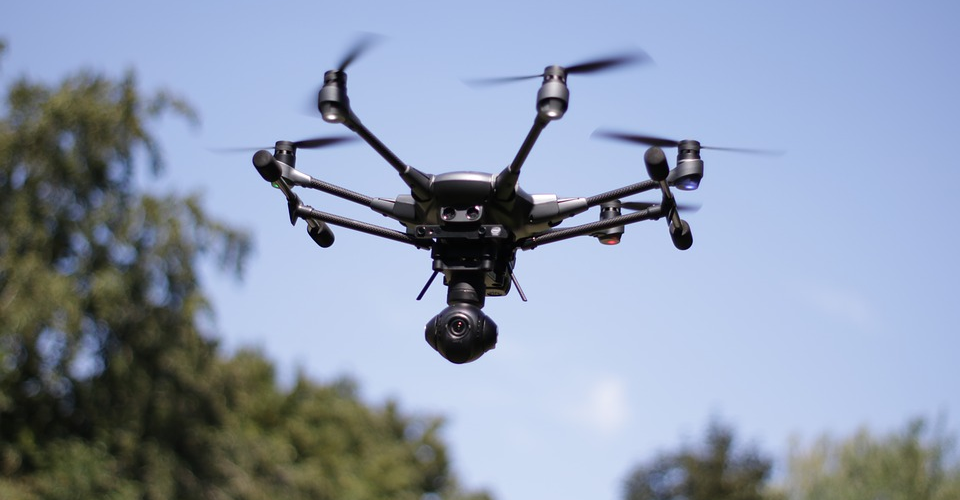8 Best Follow Me Drones of 2019
More than all the sophisticated features and advanced algorithms, the biggest reason behind the popularity of drones is the simple fact that they are just fun. You can either enjoy the experience of flying your drone manually or have it fly by itself using a number of autonomous flight modes.
One of the most entertaining features you can find in a drone is a ‘Follow Me’ mode. With this camera mode, you can effortlessly capture dynamic action shots, even If you’re still a drone flight beginner. Why should you get a Follow Me drone? What are the best brands available in the market today?
The top 8 best drones that come with a Follow Me mode
1. Best overall: DJI Mavic 2 Pro
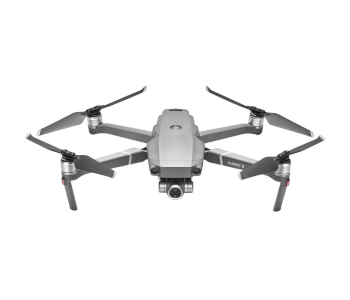
Editor’s Rating: 4.9/5
Leading the pack in our list of Follow Me drones is the DJI Mavic 2 Pro, arguably still the best ultra-portable drone in the market today. Despite sporting the compact design and foldable arms that the Mavic line has been known for, this is one of the most feature-rich drones today, even compared to higher-end and more expensive models. Since it’s so easy to carry around, the Mavic 2 Pro has quickly become a favorite of professional drone pilots.
The Mavic 2 Pro has one of the most sophisticated Follow Me features, called ActiveTrack 2.0. The mode uses the drone’s powerful Hasselblad camera and its 1-inch CMOS sensor to identify and track a subject in 3-dimensional space.
Through an internal algorithm, the drone creates a predicted trajectory for the subject it is tracking, which helps it to not lose track even if the subject momentarily moves out of visible range.
There is one more thing that makes ActiveTrack 2.0 so powerful, and that is the omnidirectional obstacle avoidance technology of the Mavic 2 Pro. Able to detect and avoid obstacles in all six directions – forward, backward, up, down, and on both sides – the Mavic 2 Pro can effortlessly weave through obstacles to keep the subject within focus of the camera.
More so, the drone can utilize its maximum speed of 45 mph while tracking the subject, when needed. If the subject you are tracking is a person running, then there is simply no way to outrun the Mavic 2 Pro.
With industry-best features, build, and flight performance, it’s no surprise that the Mavic 2 Pro is considered as one of the best drones today, almost a year after it was released. If you’re looking for a drone with an excellent Follow Me feature, then the Mavic 2 Pro is certainly a good choice.
However, the Mavic 2 Pro also one of the most expensive ultra-portable drones you can buy. If your budget can’t quite handle a drone of this caliber, then continue reading for our more pocket-friendly recommendations.
| Tech Specs |
|---|
| Video resolution: 4k @ 30 fps |
| Battery life: 31 minutes |
| Follow Me technology: Vision sensor |
| Max speed: 45 mph |
| The Pros |
|---|
| Superior camera technology |
| Omnidirectional obstacle avoidance |
| Ultra-portable design |
| The Cons |
|---|
| Expensive |
2. Best value: DJI Mavic Air
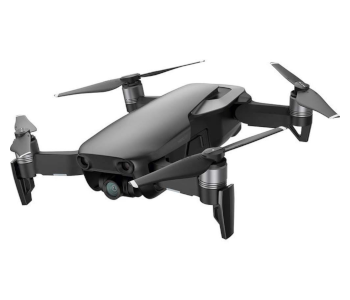
Editor’s Rating: 4.6/5
The Mavic Air is the cheapest, lightest, and smallest in DJI’s Mavic line of ultra-portable drones. This should already give you a pretty good indication of how incredibly portable this drone is, making it an excellent companion for hiking and other out-of-town trips.
The features of the Mavic Air are modest but not underwhelming. It still has a gimbal-stabilized camera that can record 4K videos at 30 fps – not a bad value for a drone that costs less than $1000. Due to its size, the flight time of the Mavic Air is limited to only 21 minutes on a single battery cycle.
The Follow Me feature of the Mavic Air uses an earlier version of the ActiveTrack technology. This version can recognize and track a subject precisely, although it does so only in 2D space. This means that it does not predict trajectories quite as well and may fail altogether if it loses visibility of the subject.
A silver lining of the Mavic Air is that it has an obstacle avoidance system that is even more advanced than that found in the more expensive Mavic Pro and Mavic Pro Platinum. The Mavic Air can detect and avoid obstacles in the forward, backward, and bottom directions, giving you a bit of leeway on the places where you can use ActiveTrack.
The Mavic Air also does not use its full speed while in ActiveTrack mode, topping out at only about 34 mph.
The ActiveTrack mode of the Mavic Air isn’t quite as foolproof as that found in newer DJI drone models, but you should be able to get good results out of it if you give it enough time to adjust to the subject’s movement. The overall quality of the Mavic Air is also surprisingly good for its price. If you’re looking for more bang for your buck, then the Mavic Air is our best recommendation.
| Tech Specs |
|---|
| Video resolution: 4k @ 30 fps |
| Battery life: 21 minutes |
| Follow Me technology: Vision sensor |
| Max speed: 42 mph |
| The Pros |
|---|
| Ultra-portable design |
| 4K-capable camera |
| Three-direction obstacle avoidance |
| The Cons |
|---|
| Limited battery life |
| No trajectory prediction |
| Flies slower in ActiveTrack |
3. Best budget: Altair Aerial Outlaw SE
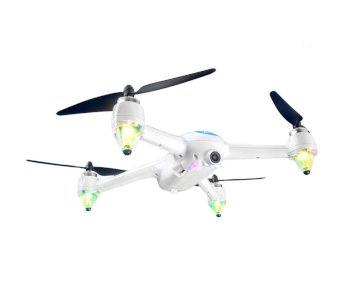
Editor’s Rating: 4.4/5
The first thing to take note of is the fact that this drone offers a Follow Me feature yet costs less than $300. That is already an excellent value at first glance and is only one of the reasons why the Altair Outlaw SE is one of the most popular drones in this price range.
The Outlaw SE was the first drone developed by Altair to come with a GPS receiver, which has given it a couple of nice features such as a GPS Flight Mode and a Return-to-Home function. The drone also comes with a built-in camera that can record videos at 1080p resolution and stream real-time to a mobile device.
When paired to a mobile device, activating the Follow Me mode of the Outlaw SE will automatically compel it to fly towards your device’s GPS position. It’s incredibly fun and satisfying to see the drone follow you around while you walk, and you might even be able to capture some nice videos with a little creative camera control.
Considering that the Outlaw SE is a budget drone, it should come as no surprise that it does not come with an obstacle avoidance system. This means that you’ll need to be extra careful whenever you make the drone fly autonomously. If you intend to focus on composing your shots while the drone flies automatically, we suggest having a visual observer with you to keep an eye on potential obstacles.
The Altair SE isn’t exactly the type of drone you might use for professional applications. Instead, it comes with a couple of features that are geared towards beginners, such as a Headless Mode and one-touch takeoff and land buttons. The drone is incredibly fun to fly, and you certainly will not feel short-changed.
| Tech Specs |
|---|
| Video resolution: 1080p |
| Battery life: 20 minutes |
| Follow Me technology: GPS |
| Max speed: No info |
| The Pros |
|---|
| Cheap |
| Has GPS stabilization |
| Beginner-friendly |
| The Cons |
|---|
| Controller-bound Follow Me |
| No obstacle avoidance |
4. DJI Mavic Pro
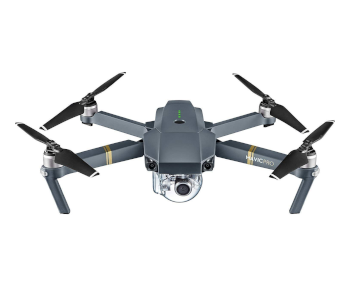
Editor’s Rating: 4.3/5
The very first Mavic drone from DJI, the Mavic Pro, is already approaching three years since its release date. Despite this fact, it remains one of the best ultra-portable drones and an excellent choice if you’re looking for a drone with a Follow Me mode.
At the time of its release, the Mavic Pro was one of the smallest drones to come with 4K video capabilities. Although this has become a standard feature nowadays, it does not take away from the reputation of the Mavic Pro as a very good camera drone which can even be used for commercial applications.
The Mavic Pro comes with an early version of DJI’s ActiveTrack mode – the same one that the Mavic Air has. While the first ActiveTrack is still a pretty good Follow Me feature, it’s quite limited by the technology of the time. It does not have trajectory prediction, which means that it can lose track of a subject that doesn’t show up in the camera’s view for some time. The speed of the Mavic Pro is also limited to only 33 mph while tracking.
Another huge limitation of the Mavic Pro when tracking a subject is its obstacle avoidance sensors that can only be found in the forward and bottom directions. This can be especially problematic if the drone runs into an obstacle while flying sideways. Thus, the Mavic Pro isn’t as “worry-free” as other, more modern drones. If you’re going to use the Mavic Pro for filmmaking while in ActiveTrack mode, we suggest having a visual observer with you.
The Mavic Pro is a pretty old model, so its price has dropped heavily compared to when it was launched. It’s still not as cheap as the Mavic Air, but you should be able to find a good deal for less than $1000 nowadays.
| Tech Specs |
|---|
| Video resolution: 4k @ 30 fps |
| Battery life: 27 minutes |
| Follow Me technology: Vision |
| Max speed: 40 mph |
| The Pros |
|---|
| Ultra-portable design |
| Offers several tracking modes |
| The Cons |
|---|
| Somewhat expensive |
| Limited obstacle avoidance |
5. DJI Phantom 4 Pro
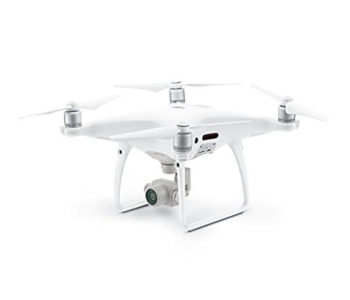
Editor’s Rating: 4/5
Long considered as one of the top drones for professional use, the Phantom 4 Pro is still one of the overall best drones you can get today. From its design alone, the Phantom 4 Pro is immediately distinct and is one of the most recognizable (and often-copied) drones.
As expected, the Phantom 4 Pro uses DJI’s signature ActiveTrack technology as a Follow Me mode. However, the Phantom 4 Pro is also a pretty old model, so its ActiveTrack feature is the older, less sophisticated version. This means that it also lacks any trajectory prediction feature, so it can easily lose track of subjects if the subject happens to become concealed by a visual obstacle.
The Phantom 4 Pro holds a slight edge to some of the other DJI drones in this list because of its five-direction obstacle avoidance system. Revolutionary during its time, the Phantom 4 Pro is better equipped to avoid obstacles as it flies autonomously with its stereo vision and infrared sensors in the forward, backward, bottom, and side sensors.
We’ll have to dock a few points from the Phantom 4 Pro because of its design, as good as it looks, I still bulky and unsuitable for carrying around in hikes and other rugged trips. Because of its reputation as a professional-grade drone, the Phantom 4 Pro remains a pretty expensive drone – even if it’s no longer being produced. However, if you’re considering going into commercial drone services, then the Phantom 4 Pro will always be a solid choice.
| Tech Specs |
|---|
| Video resolution: 4k @ 60 fps |
| Battery life: 30 minutes |
| Follow Me technology: Vision |
| Max speed: 45 mph |
| The Pros |
|---|
| Excellent 4K camera |
| Superior obstacle avoidance |
| Sleek and distinct design |
| The Cons |
|---|
| Expensive |
| Bulky design |
| Comes with older ActiveTrack technology |
| No longer in production |
6. Walkera Voyager 4
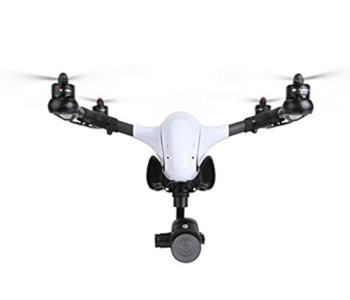
Editor’s Rating: 3.8/5
The Voyager 4 is one of the most powerful drones to come out of the Walkera brand. It comes with a load of features that discerning professional drone pilots will certainly appreciate. However, it also comes at a price tag that is out of the typical price range that casual drone pilots will consider.
Dubbed as a “flying telescope,” the Voyager 4 comes with a camera that has a telephoto lens – a rare sight in the drone industry. With this super-powered lens, the Voyager 4 is capable of up to 18 times optical zoom. This can be an incredibly useful tool for a number of commercial drone applications including photography, filmmaking, and industrial inspection.
The camera comes mounted on a gimbal with brushless motors, although you can expect video stability to suffer when you hit the higher levels of optical zoom. Through the companion mobile app, you can stream 4K video in real-time using a 4G connection with the drone.
The Voyager 4 seemingly offers a couple of options for its Follow Me mode, including Circle Flight, Fly Around Object, and Altitude Hold. However, any detailed info on how Walkera implements a Follow Me mode on the Walker 4 is sparse, and there’s virtually no feedback on how well it performs.
If you’re looking for a drone solely for its Follow Me function, then you might want to give the Voyager 4 a pass. Besides, it’s way too expensive for casual drone flight. However, if you’re looking for a professional-grade drone that comes equipped with a telephoto lens, then this is the best recommendation we can give you.
| Tech Specs |
|---|
| Video resolution: 4k @ 60 fps |
| Battery life: 20 minutes |
| Follow Me technology: Vision |
| Max speed: 45 mph |
| The Pros |
|---|
| Superior camera |
| Telephoto lens |
| The Cons |
|---|
| Very expensive |
| Not enough details on Follow Me feature |
7. Yuneec Typhoon H Plus
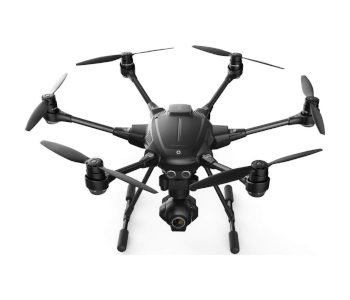
Editor’s Rating: 3.6/5
Not every drone needs to be ultra-portable, and nowhere is that more apparent than in the Yuneec Typhoon H Plus, a super-sized quadcopter with eight rotors. With its intimidating form factor and unequaled flight stability, the Typhoon H Plus is one of the go-to drones of professional drone pilots.
The Typhoon H Plus is one of the most loaded drones when it comes to features. It comes pre-equipped with the C23 camera that records 4K Ultra High Definition videos and can rotate a full 360° because of the drone’s retractable landing gear. The drone also ships with the ST16 Ground Controller, one of the best controllers in the business with an integrated display and a video transmission range of up to 1 mile.
The automatic camera modes of the Typhoon H Plus are as varied as its features. It has a Follow Me mode, plus a few variations, such as the Watch Me and Orbit Me modes. What makes the Typhoon H Plus such an excellent Follow Me mode is its obstacle avoidance system, called Intel RealSense.
Powered by the front-facing Intel Atom R200 camera, the Intel RealSense system creates a three-dimensional model of the drone’s surroundings. This allows it to not just identify and anticipate nearby obstacles, but to set the most optimal flight path for the drone to accomplish its mission. Having the Intel RealSense system kick in during a Follow Me flight simply gives you more confidence that your drone will not crash and that your subject will stay in frame as intended.
With its reputation as a top professional-grade drone, it’s no surprise that the Yuneec Typhoon H Plus is quite expensive. You can expect it to be just slightly more expensive than the DJI Mavic 2 Pro.
| Tech Specs |
|---|
| Video resolution: 4K |
| Battery life: 30 minutes |
| Follow Me technology: Vision |
| Max speed: 43.5 mph |
| The Pros |
|---|
| Superior camera |
| Excellent obstacle avoidance |
| The Cons |
|---|
| Huge footprint |
| Expensive |
8. Holy Stone HS100
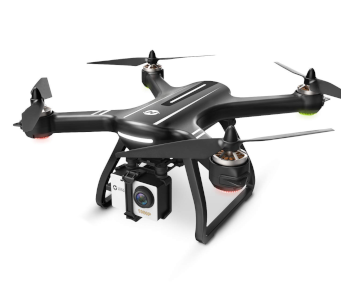
Editor’s Rating: 3.2/5
The Holy Stone HS100 is proof that a Follow Me feature does not need to come in an expensive drone. This drone, which only costs about $200, has a Follow Me mode on top of a set of satisfying features that any beginner or experienced drone pilot can enjoy.
The HS100 comes with a wide-angle 1080p camera that can feed videos in real-time to your mobile device via the companion app. The drone also has a GPS receiver that helps it maintain a stable hover and gives it an Auto Return function that will activate when it loses a connection with the controller.
The drone uses the GPS capability of your phone to offer a Follow Me mode. In this mode, the drone follows you around and keeps the camera trained at you. It’s a fun little mode for when you just want to walk around and have your drone trail behind you. If you want to take a couple of nice photos of yourself from an aerial angle, then this is the perfect Follow Me mode.
While the HS100 won’t win awards for its Follow Me mode, it’s still a very popular drone because of how accessible it is to beginners. The combination of a Headless Mode, Altitude Hold, and One-Key Takeoff and Landing makes the HS100 a drone that’s very easy to fly. The Follow Me mode is simply the icing on top of the cake – that little extra step you can take once you get the hang of flying this budget-friendly drone.
| Tech Specs |
|---|
| Video resolution: 1080p |
| Battery life: 15 minutes |
| Follow Me technology: GPS |
| Max speed: No data |
| The Pros |
|---|
| Cheap |
| Easy to learn |
| The Cons |
|---|
| GPS-bound Follow Me mode |
| No obstacle avoidance |
How does a Follow Me feature work?
As its name implies, a Follow Me mode allows a drone to fly autonomously while following a subject. There are a couple of different ways for this mode to be implemented, and it can also be combined with gimbal technology and obstacle avoidance systems to make it more foolproof.
1. GPS-guided
The older version of Follow Me technology made use of an external device, such as a phone or the drone’s remote controller, to act as a tracker that the drone will follow via GPS. In this type of Follow Me system, there is a virtual tether that connects the drone to another GPS-equipped mobile device.
The downside of this technology is that the drone needs to be kept within a limited distance from the mobile device, so they don’t lose their connection. Should that happen, the drone will typically activate its Return-to-Home function, thus ruining the shot. There’s also the fact that you might not want to bring a mobile device with you should you be out biking or hiking along a rugged trail.
2. Vision sensor
More modern drones have a completely different way of implementing a Follow Me feature. Instead of using a GPS receiver, the drone instead uses its cameras to identify a subject and to continue tracking it. This technology has the advantage of opening up a wider range of possibilities for the drone filmmaker. The subject also doesn’t have to be burdened by a mobile device or be limited to areas with good GPS reception.
This method requires advanced vision sensor technology that can differentiate between the subject and its background, although it would help if the subject and background had good contrast. As you can imagine, you can also expect drones that come with a vision-based Follow Me feature to be more expensive, although this isn’t always the case.
Final thoughts
No matter how advanced drones, at the deepest, most fundamental level, people like flying them because they are fun. It’s refreshing to see modern and sophisticated drones retaining some of the features that have made drones so entertaining, including the Follow Me mode. Of course, different drone manufacturers have put their own twist on the Follow Me, making them more reliable and less prone to causing drone crashes.
More than being used for fun, a Follow Me mode can be a legitimately useful technique for creating dynamic and action-packed drone shots. By using advanced vision sensors and GPS technology, Follow Me drones can take a lot of the pressure off from the hands of the filmmaker. This results in engaging and perfectly consistent drone action videos – a feat that likely cannot be achieved without a Follow Me mode.

